MSR ELIXIR 2 BACKPACKING TENT REVIEW
Let’s face it, backpacking tents are pricey. If you’re in the market for a new tent, you’re likely doing your research to balance cost, function, and durability before investing. Below, you’ll find my thoughts and experiences with the MSR Elixir 2 Backpacking Tent.
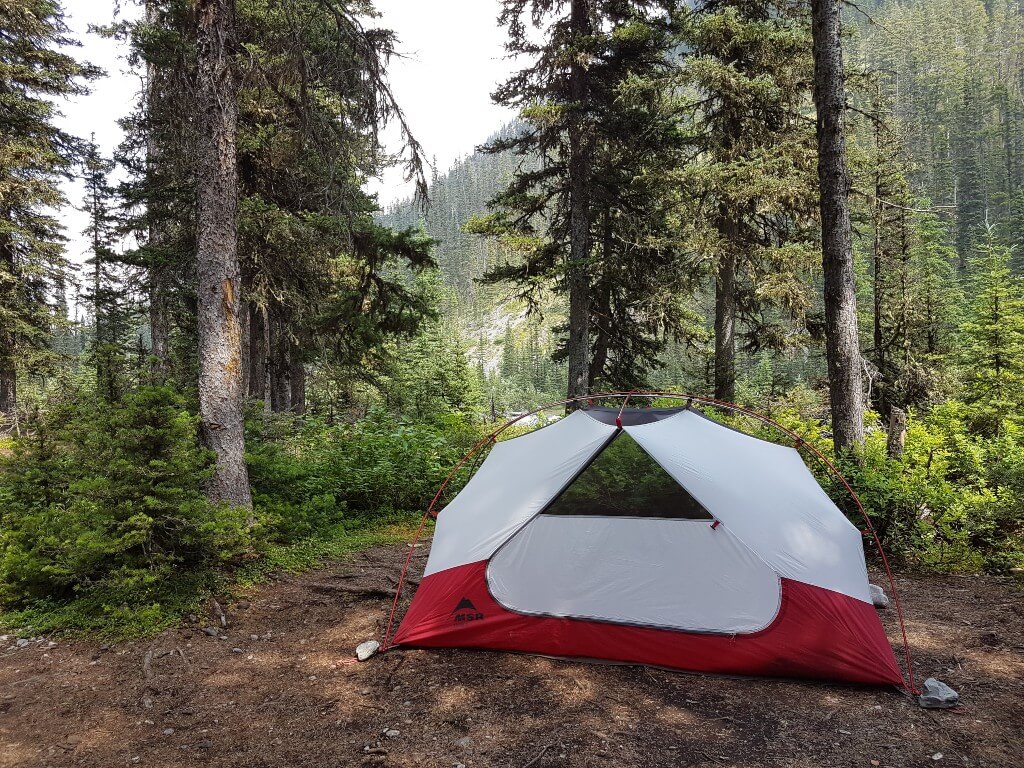
**The product reviewed here was purchased on our own. It was not gifted, nor was it provided to us at a reduced cost from the company. All opinions are my own.**
This post may include affiliate links. As an Amazon Associate I earn from qualifying purchases. Find more info in my privacy policy.
OVERVIEW OF THE MSR ELIXIR 2 BACKPACKING TENT
MSR’s Elixir 2 Backpacking Tent is a freestanding 2-person tent designed for liveability. While it’s not the lightest tent on the market, it does a great job of balancing function, space, ease of setup, and weight. With ample headroom and plenty of space for two sleeping pads (and for people over 5′ tall!), the MSR Elixir 2 is ideal for those looking to have a comfortable “home” in the backcountry.
Mountain Safety Research is a Seattle-based outdoor gear company established in 1969. In addition to tents, the company designs and manufactures many other outdoor gear products. For more information on the company, including information on their sustainability and ethical efforts, check out their About Us page.
CHECK PRICE AND AVAILABILITY OF THE MSR ELIXIR 2:
MEC | AMAZON | MSR | BACKCOUNTRY | REI
MSR ELIXIR 2 BACKPACKING TENT FEATURES AND SPECS
Type: Freestanding, includes a colour-coded pole system which makes setup super easy
Capacity: 2 People. Could easily fit a small child or dog as well.
Tent Floor Dimensions: 84 x 50 in/213 x 127 cm
Interior Peak Height: 40 in/102 cm
Doors: 2
Vestibules: 2
Packaged Weight: 6 lbs/2.77 kg
Rainfly and footprint included. ‘Fast and Light’ setup possible using only the rainfly and footprint.
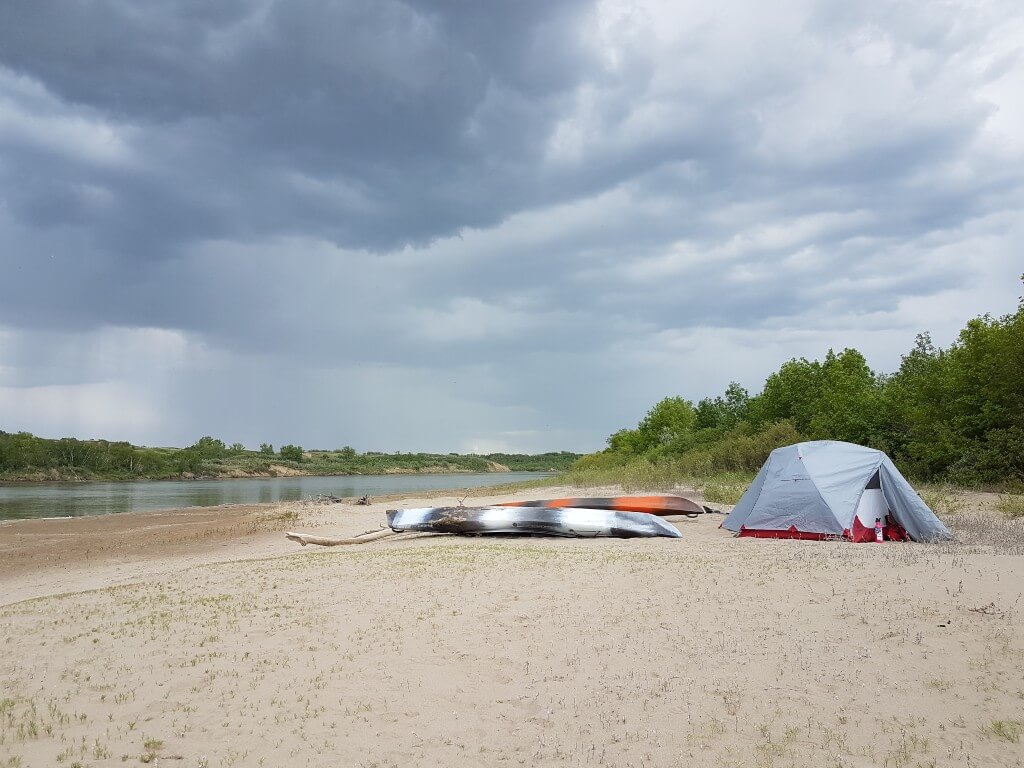
WHERE, WHEN, AND HOW I TESTED IT
After much research, we purchased this tent in preparation for our Chilkoot Trail hike. What drew me to MSR tents were the reports of excellent customer service and the glowing reviews of how roomy and durable their tents were. I originally had my sights set on the lighter Hubba Hubba NX 2, but when Mark surprised me with the Elixir 2 as a gift, I wasn’t about to turn it down. Considering on our first ever backpacking trip we used a tent I had purchased for $20 at a grocery store (which wasn’t long enough to us to even lay flat in), the Elixir 2 was a significant step up for us.
**PRO TIP: Don’t buy your tent at a grocery store**
Since acquiring our Elixir 2, it has come along on multiple backpacking trips – including the Chilkoot Trail, the Galatea Creek Trail, and the Upper Kananaskis Lake Loop. We used it on our kayak camping trip along the Chief Whitecap Waterway. And, it has provided quick and easy shelter for those impromptu I-feel-like-sleeping-outside nights at the cabin.
It has seen sun, wind, rain, thunderstorms, and Juno’s big muddy paws, and has stood up to it all. We’ve pitched it on sand, rocky ground, wooden platforms, and grass. I’ve used my Elixir 2 for both solo trips and when venturing out with Mark.
I haven’t tried using it in the ‘Free and Light’ mode (with just rainfly and footprint), so I can’t speak to its use in this way.
CHECK PRICE AND AVAILABILITY OF THE MSR ELIXIR 2:
MEC | AMAZON | MSR | BACKCOUNTRY | REI
THE GOOD, THE BAD, AND THE HONEST
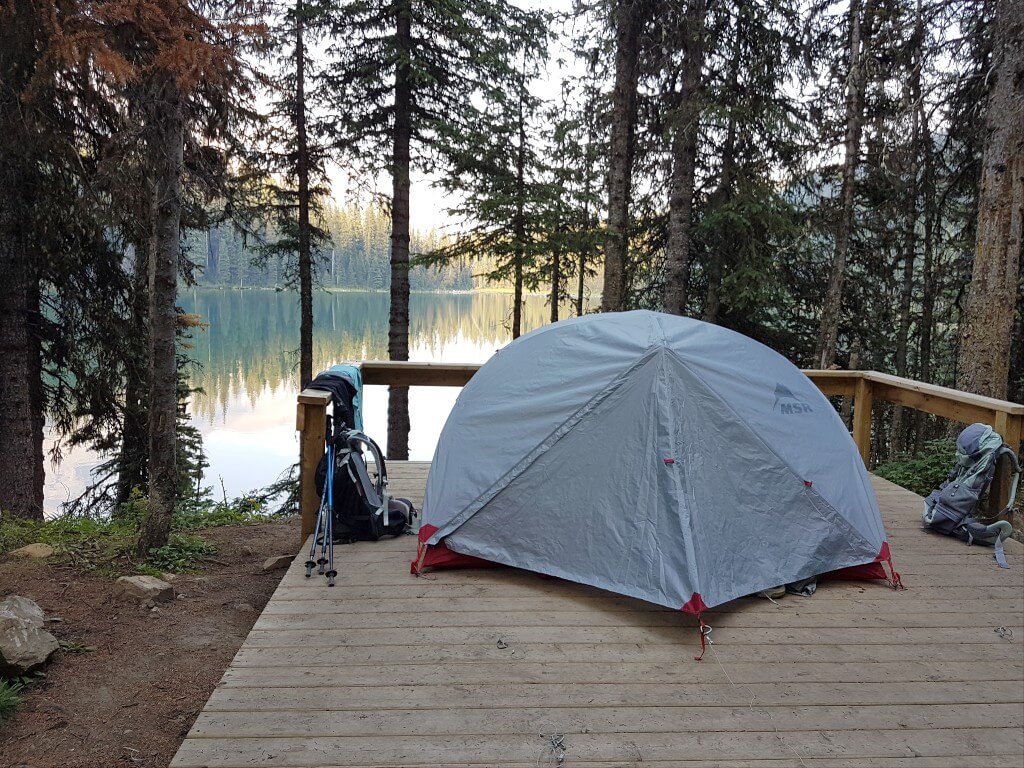
THE GOOD
As I mentioned, this tent has stood up well to the tests we’ve put it through. Aside from minimal condensation, we’ve never had a leak or water come into the tent. We’ve had no rips or tears in the material or mesh. I should mention, we always use the included footprint for an extra layer of protection from rocks and sticks that could potentially damage a tent floor. Backpacking tents always have a certain amount of give and take between weight and durability, but I’ve been impressed with the quality of the Elixir 2.
I have a lot of favourite features of this tent. Size and interior space is a big one. If you’ve been stuck inside a cramped tent on a stormy night in the backcountry, you know how miserable it can be to lack sufficient room. The MSR Elixir 2 has plenty of headroom and space to spread out. Even with two people inside, there is still room to stash water bottles, clothes, and any other items you want to keep close. There’s headroom enough to kneel or sit up comfortably, which makes journal writing sessions, clothing changes, and even a game of cards on a rainy night not only possible but even enjoyable. When using it solo, I felt like a queen having so much room all to myself.
The 2-door, 2-vestibule setup is also a definite plus. The doors sit opposite one another, meaning that each occupant has their own entrance and outer storage area. This avoids any awkward late-night games of trying to climb over your hiking partner without waking them up when you have to pee. The vestibules also add a significant amount of useful storage space for things you’d like to keep out of the rain but don’t necessarily need inside, like boots, hiking poles, and backpacks.
I really like some of the ease-of-use design features they worked into the Elixir 2. A colour-coded, attached two-pole system makes setup fool- and fatigue-proof, as you don’t have to use your brain at all (which is always a bonus at the end of a long day of hiking or paddling!). The red and silver poles are attached at swivel points and criss-cross over the tent, while the clips on the tent body have corresponding red or grey webbing, so you know which pole to attach it to. A third, shorter pole crosses over the top in the opposite direction to add tension to the vertical sidewalls and… voila, your tent body is set up. The rainfly also has colour-coded webbing on the clips that attach at the base of the poles, which make it incredibly easy to know which way it goes. The rainfly attaches to the top cross pole via grommets to keep it secure.
Out of curiosity, I set the tent up in our basement and timed myself. From storage bag to full setup at a leisurely pace, it took me 6:12. In a real-world setting, where you may be fighting wind, cold fingers, or hard ground, I’d expect to have set up done in less than 10 mins.
Some of the other features I appreciate on the Elixir 2 include the interior mesh storage pockets that help keep small items organized and easy to find, and the rainfly vents which can be propped open to help circulate air and minimize condensation. I also like the fact that you can fold back the rainfly for half coverage. This lets you have a view of the stars as you drift off to sleep, but allows for a quick conversion if rain starts to fall in the middle of the night. It’s also a great way to air out a stuffy tent if you have it pitched in the same spot for more extended periods.
THE BAD
Ultralight backpackers will likely scoff at the 6 lb weight of the Elixir 2, though that’s not something that has been a huge problem for us. When Mark and I backpack together, we split the weight, with one taking the poles and stakes and the other taking the tent body, rainfly, and footprint. I’ve also backpacked solo with this tent and had no problem packing and carrying the tent on my own. Don’t get me wrong, it’s always great to cut weight from your pack, but if you’re not doing excessive distances in a day or hiking highly technical routes, that bit of extra weight isn’t a total deal-breaker. Also, keep in mind that there’s a general rule that the lower the weight, the higher the price in the world of backpacking tents.
Another thing that may give some backpackers pause is the packed size of the Elixir 2. The tent takes up 20 x 7 in/51 x 17 cm when packed in the included stuff sack. That’s a significant amount of space to take up in or on a backpack. To make up for this, we always pack the tent body, rainfly, and groundsheet in a compression sack. With this method, we can get it down to about the size of a large cantaloupe. The tent poles and stakes get packed separately. Breaking up and packing a tent like this is common for backpackers, but do keep in mind if you don’t have an extra compression sack, that’s an additional item you might consider purchasing. The plus side to the roomy stuff sack is that it’s super easy to fit the tent in it for storage.
The only defect we’ve ever experienced with the Elixir 2 was having one of the tent pole inserts (the small inner metal piece that connects two sections of pole) come loose and slip inside the outer pole while we were on the Chilkoot Trail. Mark was able to get it back out with the help of a knife and a few choice words. Although it was a PITA to have to reset the insert each time we made camp, we were still able to pitch the tent as usual. We did a quick DIY super glue fix once we were off the trail, which has held through the years and multiple trips since then. MSR would have happily repaired or replaced the pole, but I thought it was more of a hassle to send it in and wait for a replacement since our fix worked just fine. I should also mention that MSR has a wide range of repair and replacement parts for easy DIY fixes.
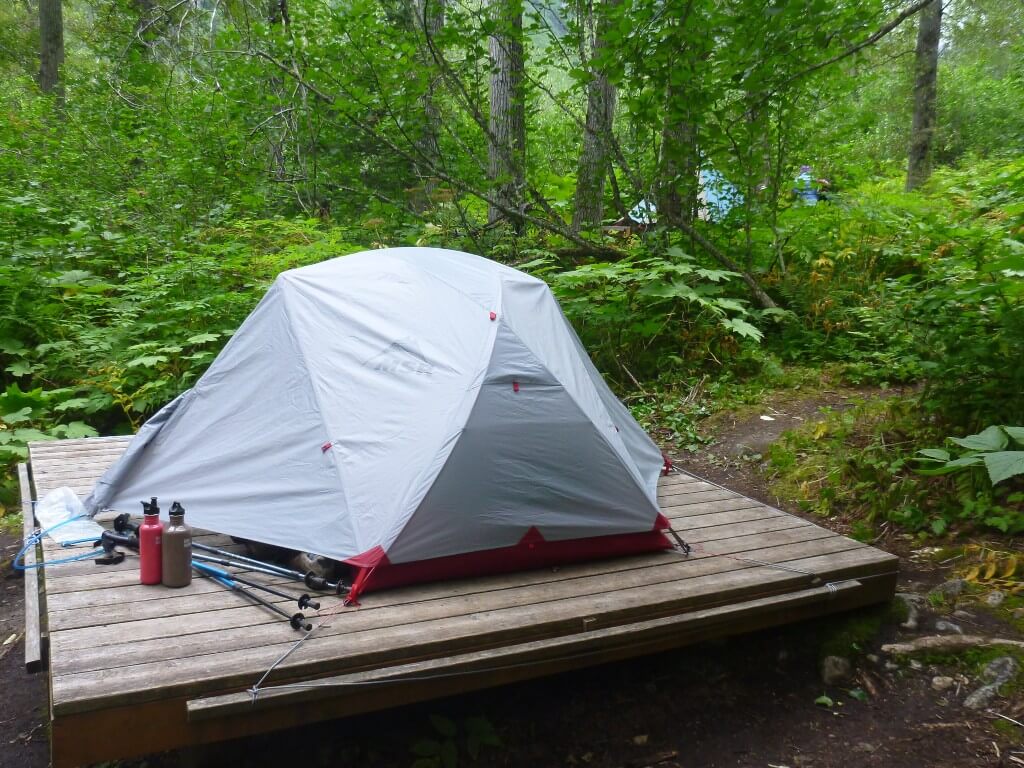
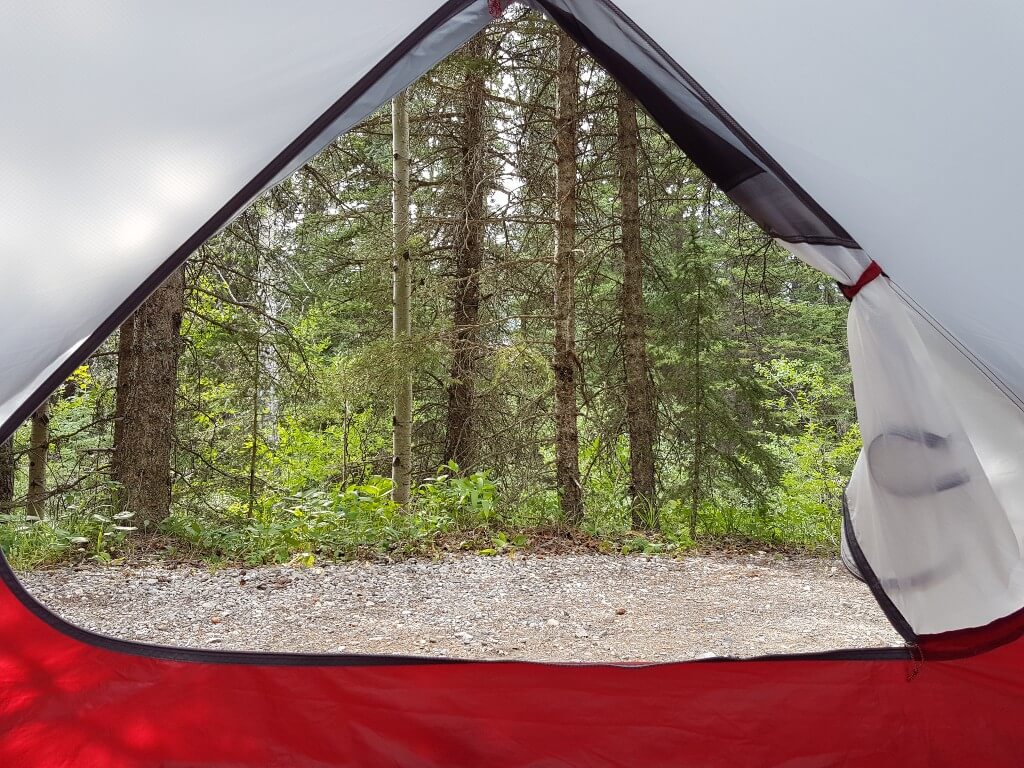
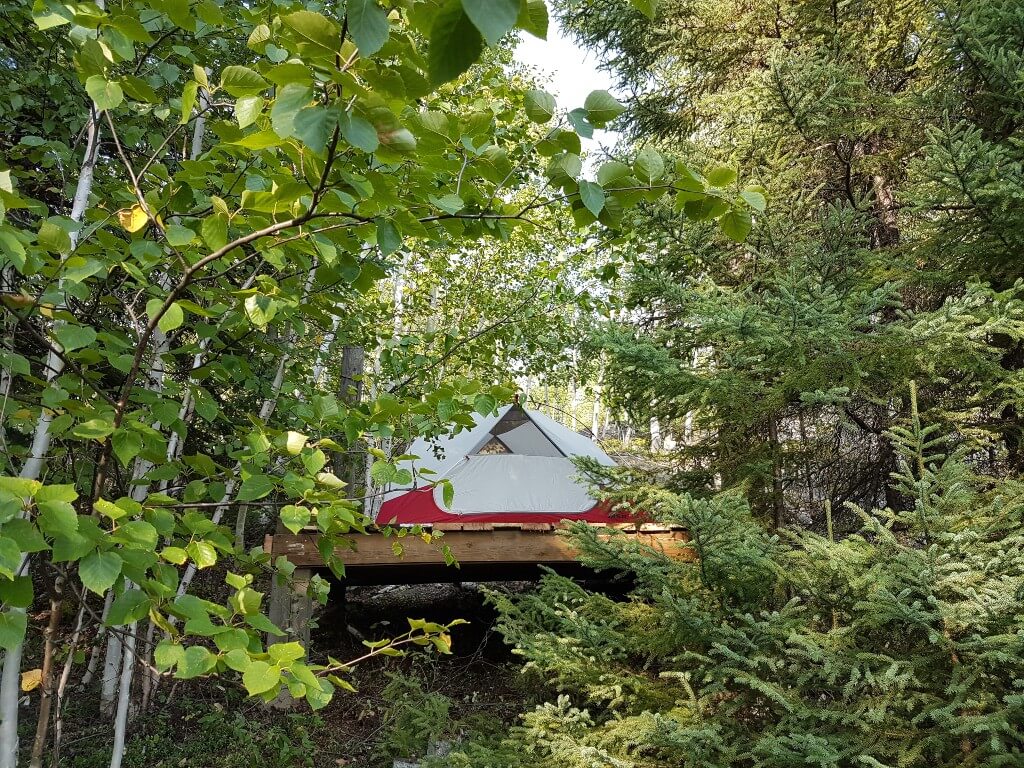
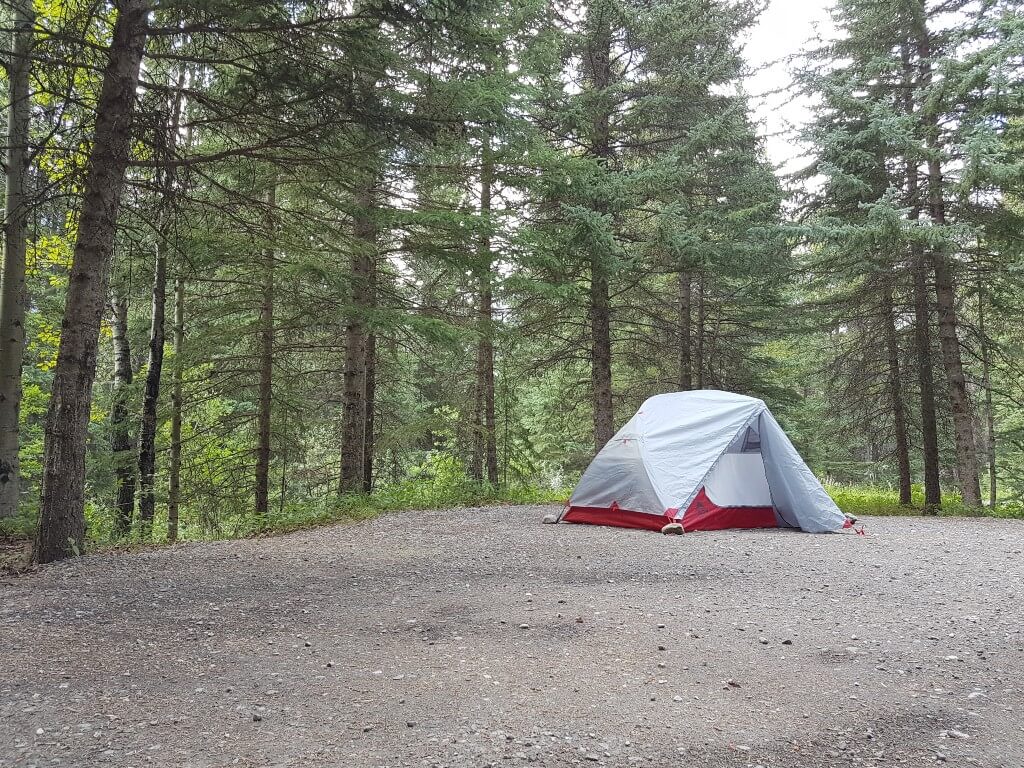
THE HONEST: IS THE MSR ELIXIR 2 WORTH YOUR MONEY?
If you’re in the market for a durable, well-made, easy-to-use backpacking tent – yes – the MSR Elixir 2 is worth your money, in my opinion. This tent is great for those of us willing to carry a bit of extra weight for space, comfort, and ease of use. I’ve been very happy with this tent on all of our adventures and have no plans to replace it any time soon. I especially love the “home away from home” feel, which has come in handy on more than one bad-weather backcountry evening.
CHECK PRICE AND AVAILABILITY OF THE MSR ELIXIR 2:
MEC | AMAZON | MSR | BACKCOUNTRY | REI
Dedicated backpacking tents are an investment you want to put some thought into. The Elixir 2 generally retails for $319.95 USD/$399.95 CAD, which puts it in the mid to lower range of comparable backpacking tents. If you’re someone who is obsessed with shaving ounces off your base weight, don’t really need the features the Elixir 2 provides, or are just getting your feet wet in the backpacking world, there may be better options for you out there. For newbies, I highly recommend borrowing or renting tents for the first few trips to get an idea of what features you truly value before buying your own.
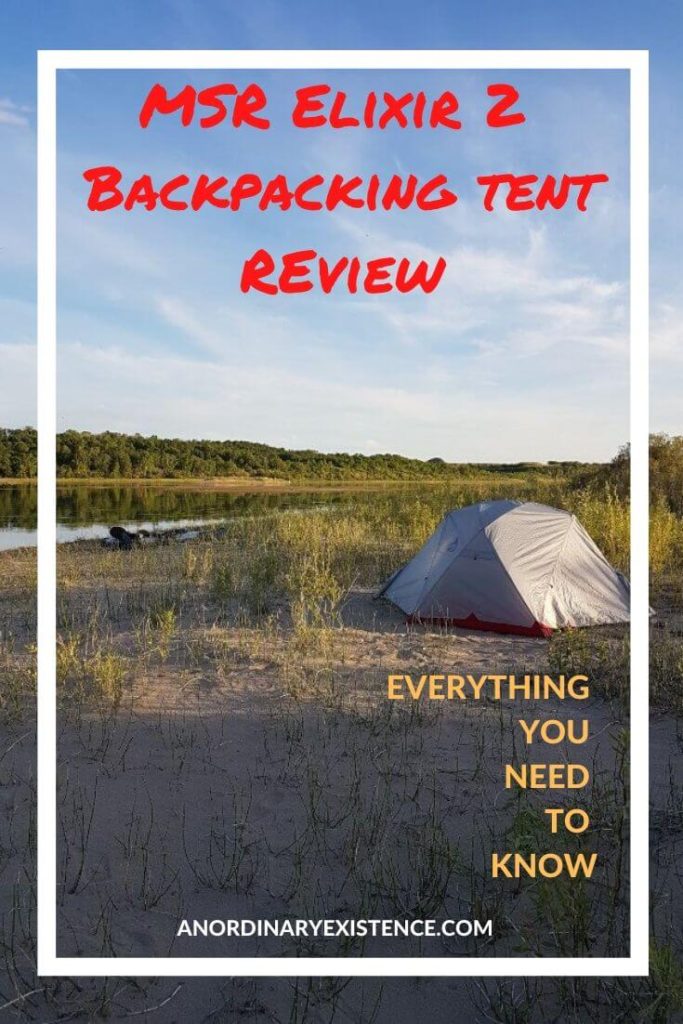
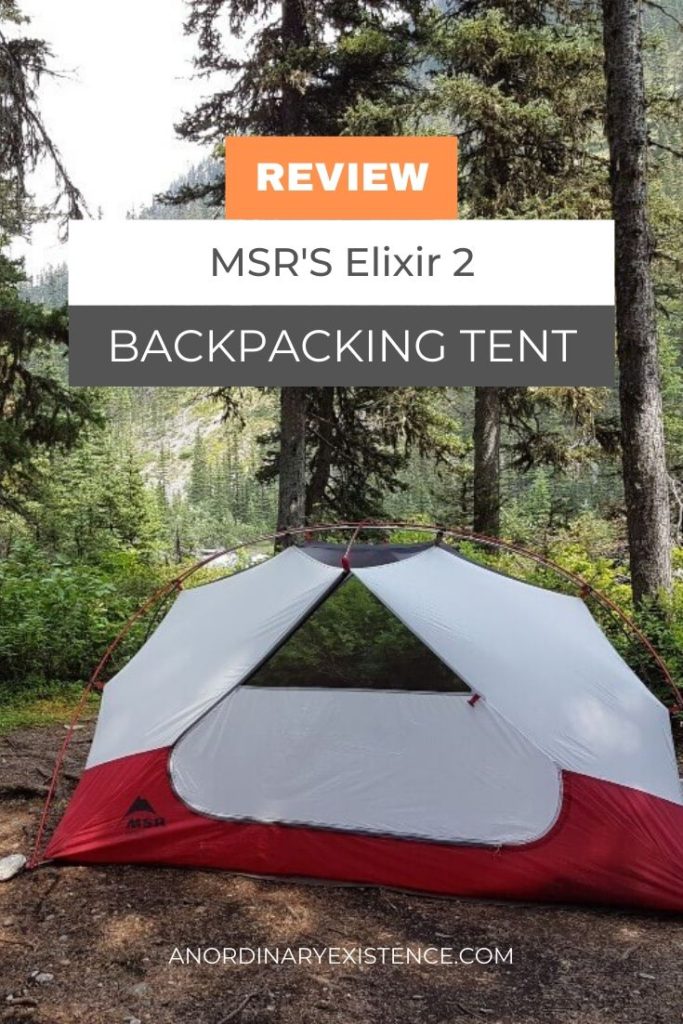
FIND THIS REVIEW USEFUL? CHECK OUT MY REVIEW OF THE JETBOIL ZIP COOKING SYSTEM

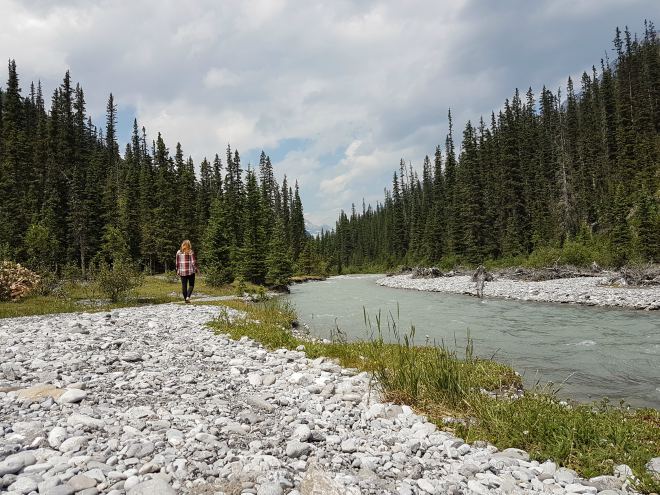
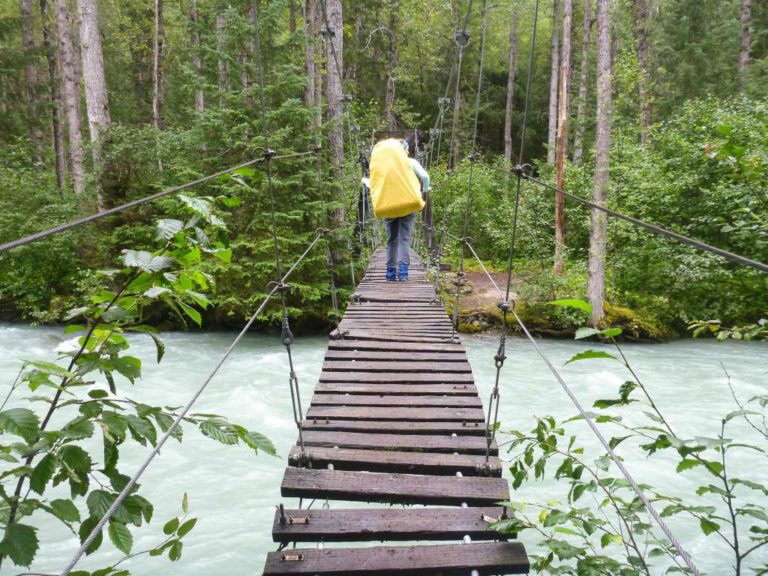
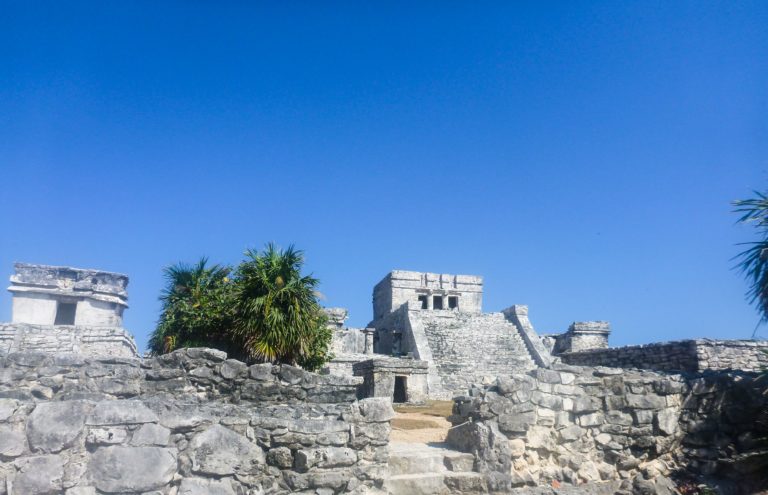
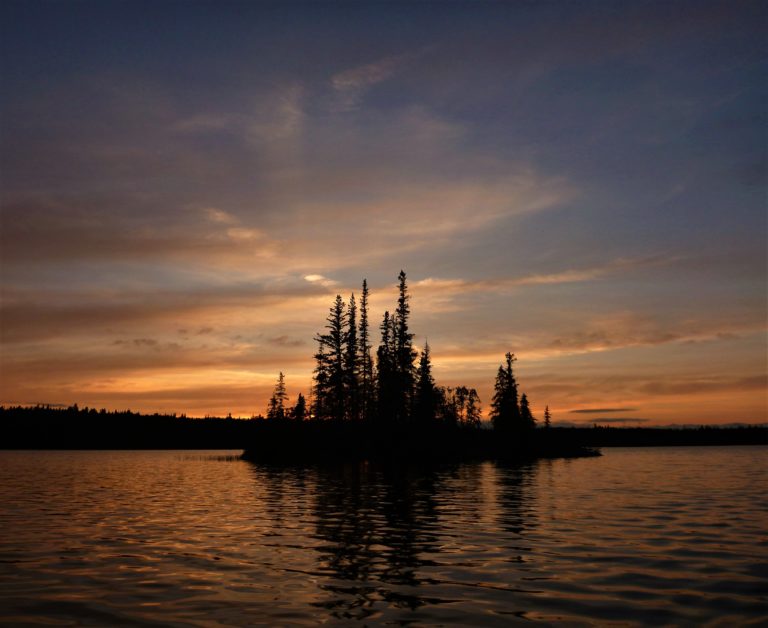
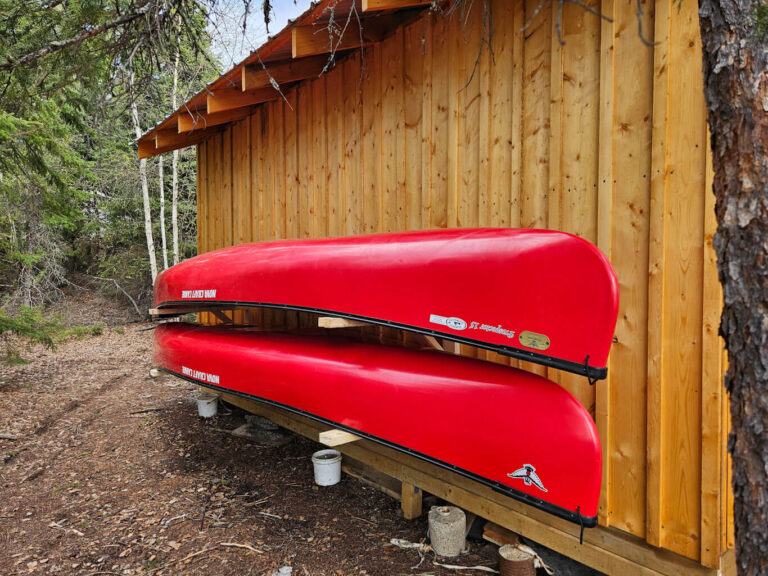
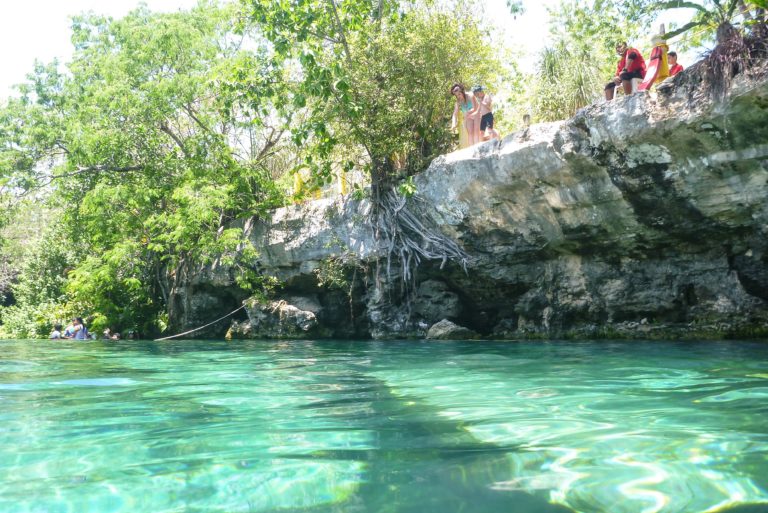
What size compression sack did you use?
Hi Emma – The compression sack I use is 10L, which allows just the right amount of space to get the tent in and compressed without a struggle.
Hi Lisa,
Liked the review, loved the pro tip not to buy a tent at a grocery store ! Would you happen to have a picture of the tent once packed in the compression bag ? I’m trying to figure out if it would fit in the sleeping bag compartment of my Osprey Stratos 36 backpack once compressed. Unfortunately I don’t have a large cantaloupe at hand so can’t really test.
Thanks for your time, keep up the god work !
Hi Vincent,
Thanks for your comment! I don’t happen to have a photo but I measured the width of the compression sack I use and it’s about 10 inches across. Once the tent body is in there and compressed, it forms a somewhat misshapen ball about that diameter. The end result could vary depending on the size/shape of the compression sack you use, but I would think it would fit in a sleeping bag compartment without too much trouble. I have a Sirrus 50 (the women’s version of the Stratos series) and it would fit without issue in the sleeping bag compartment of my bag. I’m assuming though that the compartment on a 36 would be a bit smaller than the 50L. I would think the biggest issue with packing it in the bottom compartment in the compression sack I use would be weight distribution with the round shape. You may be better off just free-stuffing the tent body in there and making that compartment the “stuff sack” to even things out.
What size compression bag do you use? And do you put the rainfly the tent and groundsheet all in the same bag?
I use a 10L compression sack and put the tent, rainfly, and groundsheet in there. If the groundsheet is exceptionally dirty I’ll sometimes leave that out and slip it into an external pocket on my bag where it won’t get everything else messy.